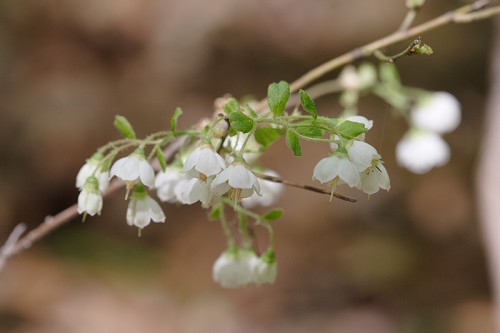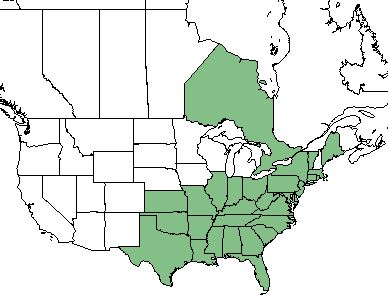Difference between revisions of "Vaccinium stamineum"
(→Conservation and Management) |
|||
| Line 1: | Line 1: | ||
{{italic title}} | {{italic title}} | ||
| + | Common name: dwarf deerberry <ref name= "Weakley 2015"/>, Appalachian deerberry <ref name= "Weakley 2015"/>, Florida deerberry <ref name= "Weakley 2015"/>, whiteleaf deerberry <ref name= "Weakley 2015"/>, southern deerberry <ref name= "Weakley 2015"/>, common deerberry <ref name= "Weakley 2015"/> | ||
<!-- Get the taxonomy information from the NRCS Plants database --> | <!-- Get the taxonomy information from the NRCS Plants database --> | ||
{{taxobox | {{taxobox | ||
Revision as of 12:37, 12 June 2018
Common name: dwarf deerberry [1], Appalachian deerberry [1], Florida deerberry [1], whiteleaf deerberry [1], southern deerberry [1], common deerberry [1]
| Vaccinium stamineum | |
|---|---|

| |
| Photo by John Gwaltney hosted at Southeastern Flora.com | |
| Scientific classification | |
| Kingdom: | Plantae |
| Division: | Magnoliophyta - Flowering plants |
| Class: | Magnoliopsida - Dicots |
| Order: | Ericales |
| Family: | Ericaceae |
| Genus: | Vaccinium |
| Species: | V. stamineum |
| Binomial name | |
| Vaccinium stamineum L. | |

| |
| Natural range of Vaccinium stamineum from USDA NRCS Plants Database. | |
Contents
Taxonomic Notes
Synonyms: (for var. 2) Polycodium candicans Small; V. candicans (C. Mohr) Sleumer; (for var. glandulosum) Polycodium glandulosum W.W. Ashe; (for var. sericeum) Polycodium sericeum (C. Mohr) C.B. Robinson
Varieties: Vaccinium stamineum Linnaeus var. 1; Vaccinium stamineum Linnaeus var. 2; Vaccinium stamineum Linnaeus var. caesium (Greene) D.B. Ward; Vaccinium stamineum Linnaeus var. glandulosum (W.W. Ashe) D.B. Ward; Vaccinium stamineum Linnaeus var. sericeum (C. Mohr) D.B. Ward; Vaccinium stamineum Linnaeus var. stamineum
Description
V. stamineum is a perennial shrub of the Ericaceae family native to North America and Canada. [2]
Distribution
V. stamineum is found in the southeastern corner of the United States from Texas to Maine, as well as the Ontario region of Canada. [2]
Ecology
Habitat
V. stamineum proliferates in pinelands, xeric to submesic woodlands and forests, including pineoak/heath and shrub balds, pine flatwoods, and rock outcrops (unlike most Vaccinium, often on mafic, ultramafic, or calcareous rocks). [1]
Phenology
V. stamineum flowers February-May and July. [3]
Fire ecology
V. stamineum is not fire resistant but has medium fire tolerance. [2]
Use by animals
V. stamineum has medium palatability for browsing and grazing animals. [2]
Conservation and Management
V. stamineum is listed as endangered by the Vermont Department of Fish and Wildlife Nongame and Natural Heritage Program. [2]
Cultivation and restoration
Photo Gallery
References and notes
- ↑ 1.0 1.1 1.2 1.3 1.4 1.5 1.6 Weakley, A. S. (2015). Flora of the Southern and Mid-Atlantic States. Chapel Hill, NC, University of North Carolina Herbarium.
- ↑ 2.0 2.1 2.2 2.3 2.4 USDA Plant Database https://plants.usda.gov/core/profile?symbol=VAST
- ↑ PanFlora Author: Gil Nelson URL: http://www.gilnelson.com/PanFlora/ Date Accessed: 5/29/18